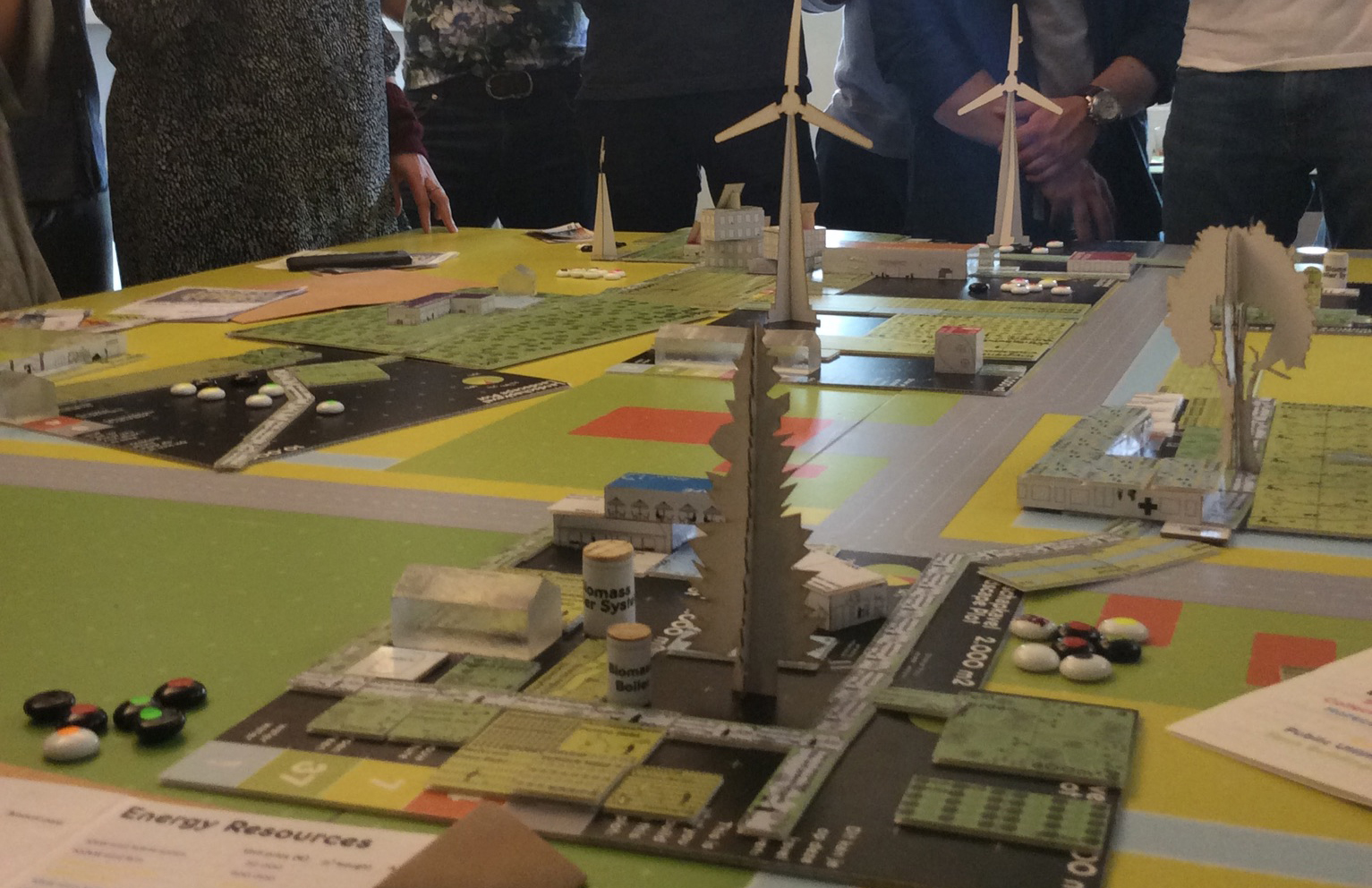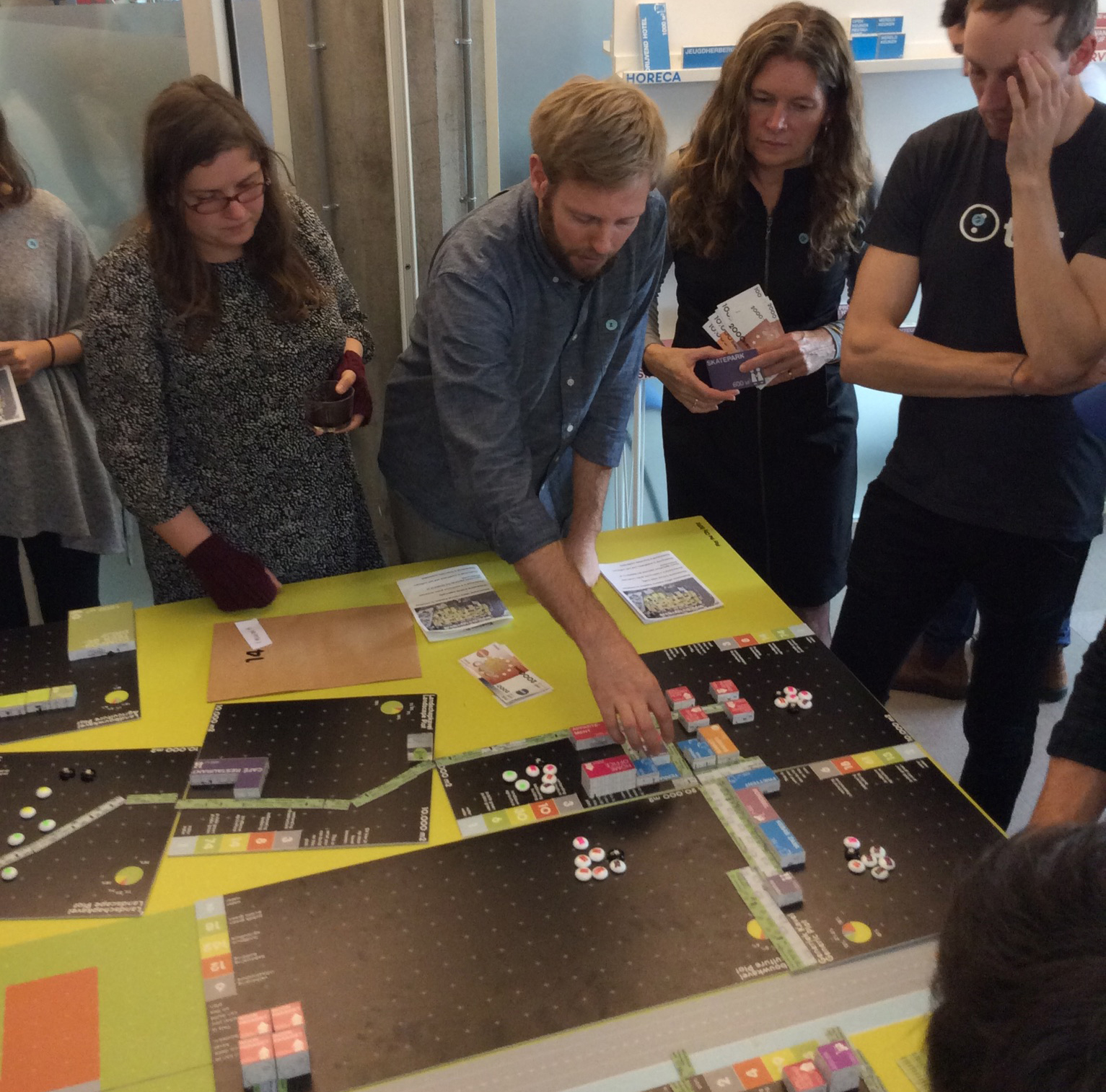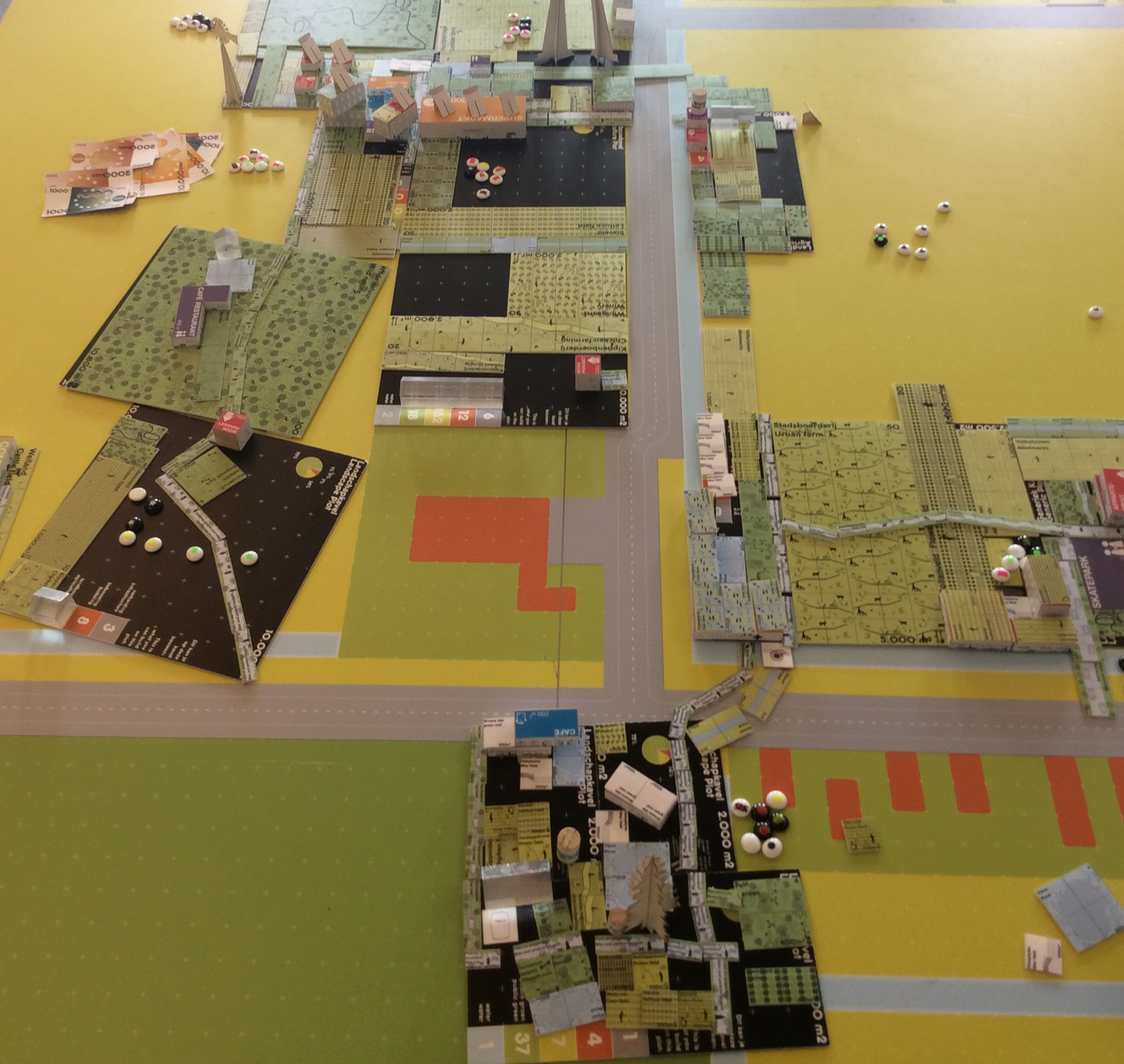Games for Cities
Play Oosterwold (2012)
Almere [NL]
Developed by:
A serious game requiring players to assume various roles, each with their own budget and land-use limitations, and to simultaneously make investment and block layout decisions based on a number of innovative urban planning rules

Play Oosterwold was designed as a tool for supplying feedback regarding the implementation of the revolutionary DIY Plan Oosterwold. This plan includes a range of innovative land-use principles for this Polder region, introducing for example: heightened responsibilities for individual entrepreneurs over infrastructure which would traditionally be met by the state; fewer restrictions applied to private developments in terms of zoning, form and governance; and requirements for privately owned public green space. Before the plan could be rolled out successfully, the City opted to test how each individual stakeholder would interpret and activate these rules through a game, revealing how individual entrepreneurs choose to invest when expected to provide their own local roads, energy production, water provision and sewage systems. Would these rules lead entrepreneurs to build a low density suburb with self-managed green public spaces, and large farmlands mixed with businesses and autarchic living as the plan suggested? Would the given rules help achieve a certain spatial quality? What would be the respective roles of individuals and the state in the financial and juristic organization of the city? These are critical questions to ask, and a game provides the ideal format for organically working through these complex and subjective interpretations.
Over the course of 50+ sessions since 2012 – involving current and potential land owners, speculating investors, designers, and engaged municipalities – the design team synthesised clear patterns of interpretation and implementation amongst players. The game includes three role playing agencies that are translated into cards: Future occupants living, working and playing in the polders as investors small, medium and large; an area manger representing the local government; and the bank controlling the cash flow for investments. Game developments were analysed to inform later revisions to the Plan before construction started. This demonstrates real potential for games, both for engaging people around issues of urban planning and circularity, and for rapidly prototyping urban interventions as a method for testing a plan’s intended outcomes before implementing it.
The autarchic living and working conditions encouraged by the plan leads to the emergence of symbiotic or parasitic relations between players, both financially and socially, in almost every game. The building program is always adventurous with a variety of building typologies, ranging from large farms combined with business, education, leisure and a residential program, to small aquaponic farms integrated into solar energy powered homes, distance learning centres within bioengineering farms, single villas, and even beer breweries attached to collective housing initiatives. Confronted by the challenge of self-building local public infrastructure, players start to form groups to deal with issues of water management, the street network, or the energy grid. In the game simulation environment, organising collectively emerges naturally around the game table in every game jam, with some players even contemplating how to organise such effective interactive processes to include future inhabitants during the real implementation of Plan Oosterwold. A responsibility for public infrastructure triggered a reaction of clustering complementary programs and shared initiatives, as well as effectively re-using existing infrastructure to avoid new construction. This organic reaction may result in a more efficient use of public infrastructural services. The notion of privately purchasing and maintaining publicly accessible green space was rather new for the participants in the game, causing them to ignore plots with a high percentage of public green space as well as invent semipublic.


